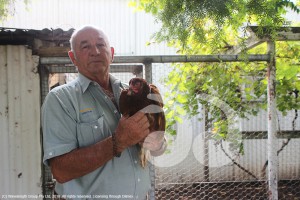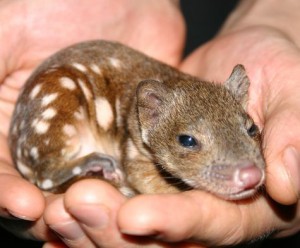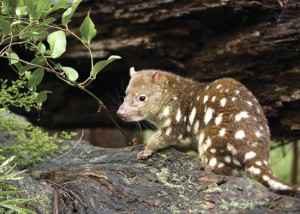Lock Up Your Chooks
DARRYL Moxey had nine of his chooks decapitated by quolls, which were then heard snarling and finishing off their meal of chicken under his house in Oxford Road, Scone.
“They took their heads clean off, but didn’t maul them like a fox would,” said Mr Moxey.
“And other chook was under the house and I heard them growling under the house, that’s why I think there were two of them,” he said.
“The sound is like, you know when you go to take feed off a cat, a little bit like that only it’s more of a rolling deeper throat growl,” Darryl Moxey said.
There have been several reports of quolls killing chickens in town and a few quolls seen by residents on daybreak.
They are nocturnal, grow to the size of a large cat and were once Australia’s largest predator, but have suffered from foxes preying on their young and habitat destruction.
Quolls are a native species and protected.
Steve Wright, area operations coordinator for the National Parks and Wildlife services based in Scone, said quolls are probably more common than we realise and urged residents to contact them with any sightings.
“They are probably more common than we realise and we have no idea how many there may be,” Mr Wright said.
“At one time they were Australia’s largest predator, so they occur in any forest type that supports wild life and they’ll take on any prey they can catch,” he said.
“They are sight hunters, which means they’re stimulated by movement and explains why if they get into a chook pen they basically just keep killing chooks until all movement stops.
“They will hunt anything they think they can bring down, birds, reptiles, snakes and lizards, eggs, possums, gliders, small wallabies, they have a broad prey range,” Steve Wright said.
Mr Wright said people who have chickens in town should fortify their hen houses, by ensuring there are no holes larger than the size of a fist and that it has have a roof.
“Anything that they would do to keep foxes out will keep out a quoll but the main difference with a quoll is they are better at climbing, a quoll can quite easily climb a six foot mesh fence, where as a fox has more difficulty doing that,” said Mr Wright.
“Having a roof on the hen house or avery is important to keep quolls out,” he said.
“When people have chooks and there are quolls around they either lock up their hen house like Fort Knox or they stop keeping chickens,” Steve Wright said.
Residents are encouraged to phone the National Parks to report sightings of quolls so they can gain a better understanding of the local population: T: 02 6540 2300
Residents who see foxes in town are encouraged to contact Local Land Services for management advice: T: 02 6540 2400.
For more information on quolls visit the website of the Office of Environment: Quoll fact sheet.
 scone.com.au
scone.com.au

